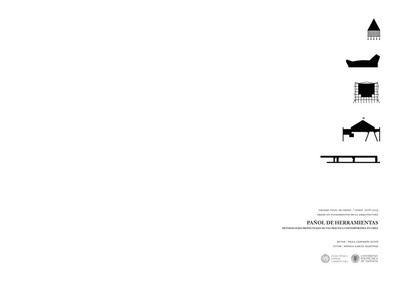JavaScript is disabled for your browser. Some features of this site may not work without it.
Buscar en RiuNet
Listar
Mi cuenta
Estadísticas
Ayuda RiuNet
Admin. UPV
Pañol de herramientas. Metodologías proyectuales de una práctica contemporánea en Chile
Mostrar el registro completo del ítem
Cerveron Estañ, PM. (2019). Pañol de herramientas. Metodologías proyectuales de una práctica contemporánea en Chile. http://hdl.handle.net/10251/134245
Por favor, use este identificador para citar o enlazar este ítem: http://hdl.handle.net/10251/134245
Ficheros en el ítem
Metadatos del ítem
| Título: | Pañol de herramientas. Metodologías proyectuales de una práctica contemporánea en Chile | |||
| Autor: | Cerveron Estañ, Paula Maria | |||
| Director(es): | ||||
| Fecha acto/lectura: |
|
|||
| Resumen: |
[ES] Tomando como referentes a los arquitectos chilenos Smiljan Radic o Pezo Von Ellrichshausen, se desvelan reglas instrumentales, decisiones de diseño y argumentos proyectuales que permiten apuntalar un marco metodológico. ...[+]
[EN] Taking as references the Chilean architects Smiljan Radic or Pezo Von Ellrichshausen, instrumental rules, design decisions and project arguments that support a methodological framework are unveiled. Ways of working ...[+]
|
|||
| Palabras clave: |
|
|||
| Derechos de uso: | Reconocimiento (by) | |||
| Editorial: |
|
|||
| Titulación: |
|
|||
| Tipo: |
|
Localización
recommendations
Este ítem aparece en la(s) siguiente(s) colección(ones)
-
ETSA - Trabajos académicos [4839]
Escuela Técnica Superior de Arquitectura







